Brevis...
Price: $799 retail/$399 street
Likes: excellent mic pres, A/D-D/A
Dislikes: no onboard effects at 192K
Wow Factor: separates quality in USB box
More info: TASCAM UH-7000
by Dr. Frederick J. Bashour
Call it déjà-vu, call it coming full circle, but whatever you call it, I have had this nostalgic feeling the entire time I’ve been using this new TASCAM UH-7000 computer recording interface. My first serious audio tape recorder, the TEAC A-7030 (analog, of course), was purchased in 1970 for the huge sum of $800, a lot of cash for a first year Yale graduate student. I remember picking it up in a huge carton at a Bradley Airport loading dock — on the way to a gig; it was my first (of several) stereo, two-track ¼-inch TEAC 7030s. In 1970, TEAC had yet to branch off TASCAM for pro audio sales, but I find it fascinating that the old and the new have 7000-series numbers.
Just as my vintage stereo TEAC A-7030 recorder (which still runs just fine) consisted of two parts—the tape transport and the tape electronics — today’s digital audio era still employs the same stereo recorder concept. The only difference is that today’s digital equivalent of the old analog “tape transport” is now the home computer, which has become the most significant part of an audio-recording system. As a result, numerous “interfaces” have come along over the last 10 years, offering a plethora of audio features and connectivity to make the computer pro audio’s most effective recording tool.
Features
The USB-connector based TASCAM UH-7000, priced at an amazing $599 retail ($399 street price) is a high-quality, 4-input/4-output computer audio interface with phantom-powered, stereo microphone preamps, and similar converter technology as in the highly acclaimed standalone TASCAM DA-3000 hi-resolution recorder (minus DSD): the Burr-Brown PCM4202 A/D converter and Burr-Brown, PCM1795 DAC converter. The UH-7000 USB interface is very well made, excellent sounding, fairly-priced, and made with an industrial design quite a bit different from similar audio gadgets on the market.
With just a pair of good microphones connected to the UH-7000’s inputs, a modern personal computer and a stereo recording app, such as the freeware Audacity, anyone can make “professional quality” stereo recordings.
So why is it different from other “USB Interfaces?” First, TEAC has been making audio recorders for a very long time and, over all those years, has developed a strong, coherent company philosophy about audio design and industrial design. It is clear that the good engineering practices demonstrated in their audio designs are reflected in their overall industrial design. Secondly, this is a stereo interface, a very full-featured stereo interface and not a multi-channel unit. There are plenty of multi-channel interfaces there on the market, trying to squeeze multiple inputs and outputs into a single rack-sized chassis.
The third differentiation is that the UH-7000 can also be used as a standalone mic preamp and/or analog-to-digital converter (with AES-EBU digital outputs), and as a monitor DAC. For this reviewer, the fact that the TASCAM UH-7000 can add two, very high-quality channels — all the way from microphone to digital output — to any DAW, is huge!
And fourth, because it also has an AES/EBU digital input, when you connect the TASCAM to a computer via USB (i.e., used as a standard USB audio interface), it can mix two stereo pairs — the two microphone channels and the two line channels — into the AES/EBU digital input stream, as well as locking its clock to any incoming digital stream’s clock, since it lacks true word clock I/O.
Compact form factor
The TASCAM UH-7000 is in the half-rack size form factor, half of a standard 3.5” (two-rack spaces tall) unit, but as supplied for review, was presented in a finished enclosure, with very thick metal end panels. Its front panel is dominated by two large knobs, which set mic (or line) input level — very precisely, over about a 40 dB range — and two LED bar graph level meters.
 |
| Plenty of rear-panel connection options |
On the left is the (smart) power knob and a ¼-inch headphone jack, powered by the line-output driver, and also controlled by a volume knob of its own over on the right. On the right side of the front panel, one also finds two “smart” push buttons, which call up the mixer panel when the UH-7000 is connected to a computer and to activate the “link-line” function. When pushed simultaneously, they activate the 48V DC phantom power microphone circuit. Above these are five status LEDS, showing sample rate (from 44.1 kHz to 192 kHz), and whether the unit is locked to its AES/EBU digital input.
The rear panel demonstrates exactly how “complete” a stereo converter the TASCAM UH-7000 is. Besides pairs of XLR jacks for balanced analog mic inputs and line outputs, there are also a pair of ¼-inch TRS jacks, for balanced analog line input, a pair of male and female XLRs for AES/EBU digital I/O, the requisite USB 2.0 port and an IEC connector for 100-240V AC power.
In the studio
When the UH-7000 arrived at Studio Dufay, I was scheduled to record myself — while reminiscing about one of my previous lives as a fledgling music theorist in the late 1970s. The president of the Society of Music Theory (SMT) had just called. Since I had actually read a scholarly paper at the very conference in which the Society was originally formed, he wanted my audio file to post on the SMT website. So I figured this would be a perfect first test for the UH-7000.
I connected one of my Neumann M 249s to the TASCAM channel 1 input, and connected the digital output to one of the sixteen digital inputs of the RME HDSPe AES PCIe sound card, which forms the digital interface to my Mac Pro recording/editing workstation.
I was counting on using the TASCAM in standalone mode. However, I quickly learned, by glancing over the well-written 32-page manual, that if one doesn’t want to accept the unit’s defaults (which includes a sample rate of 44.1 kHz and I wanted 96 kHz), one must first connect it “normally” to a computer via USB, and then adjust the settings. So that’s why the manual begins with “installing the driver!”
I then took a detour from my spoken-word project, and connected the UH-7000 to my Mac Pro, downloaded and installed the appropriate driver and, presto, it became the Mac’s audio interface to the rest of the world. I had no problems during set up, and everything worked as described in the manual. The TASCAM driver appeared in Mac’s Audio MIDI Setup, and, once properly selected, all was good to go.
The A/D-D/A converter circuitry in the UH-7000 uses the latest Burr-Brown delta-sigma chips, and even its internal clock has a TCXO with 1-ppm precision. There are also high-grade audio parts in the D/A path, including film resistors. Claimed S/N specs for A/D and D/A are in excess of 120 dB.
I pressed “mixer” on its front panel, and in about a second, the mixer-panel screen appeared on my monitor. The mixer panel has three tabbed pages — Interface, Mixer, and Effects. By selecting “Interface,” I was able to change the sample rate to my required 96 kHz, and confirm that the clock setting was “automatic.”
To enable the standalone mode to work properly, the UH-7000 will save the current setting’s parameters to its internal memory; other settings can be saved to the computer, but when disconnected from a computer, the TASCAM will “remember” only its last setting.
As previously stated, there is no word clock I/O, so one way to lock the TASCAM, in standalone mode, to my RME/Merging Technologies Pyramix DAW system was to connect one of its 16-digital outputs (with no data, i.e., its volume level turned all the way down) to the UH-7000’s digital input. This trick works with any DAW, but if you also have a studio clock device (such as my Apogee Big Ben, which has a separate AES3 output) one can also use that clock, which is what I did.
The virtual mixer
There are nineteen parameters, adjustable on the Mixer page, which are also saved for use in standalone mode. I’ll discuss some of them later in this article, when I return to the unit’s use as an USB interface. But first, I wanted to use it as an “auxiliary” stereo pair of channels, feeding, digitally, into my studio’s own DAW and interface setup.
Once I had it set the way I wanted, I disconnected it from the Mac Pro, and reconnected it to the AES/EBU digital input from my main DAW, and the AES3 output from Big Ben, as previously described. I was gratified to see both the TASCAM’s left meter, and appropriate meters in my Merging Technologies Pyramix software showing signal presence when I spoke into the microphone.
Because I had its digital input connected, the TASCAM had locked to my system clock, and the appropriate LED on the front panel was lit. Furthermore, according to the manual, its digital output is always active, so whatever appears at the analog outputs (and, paralleled, to the headphone jack) also appears at its AES/EBU XLR as well. It’s assignable as well. Very cool.
 |
| Effective reverb and EQ effects |
I recorded my Music Theory project in 24/96 PCM and then played it all back. The first thing I noticed was how good I sounded! Granted, a vintage 249 microphone makes most everything sound big and warm, but I know well how a “cheap” preamp can diminish that quality. My 249, however, really liked the UH-7000.
The TASCAM’s input impedance is spec’d at 2.2 kHz, a figure sufficiently high to please most mics — except for a few ribbons. The second thing I noticed was that, although the level pots appeared to be accurately calibrated over their entire range, that range was not extreme. The input-level pots are calibrated from 62 down to 22, and since they’re just standard potentiometers, they travel smoothly through their range.
In addition to that spoken word project I captured with the UH-7000, I substituted these preamps for other pairs of mic preamps in every classical music recording session scheduled during the audition period. Thus, I was able to hear how they sounded with a wide range of sources. I’ll simply generalize and state that the UH-7000’s mic preamps sound very clean and clear, with a hint of dryness. In other words, along the continuum from euphonically colored and “tubey” to the proverbial, completely neutral “straight wire with gain,” the TASCAM is definitely in the latter camp. But it also has a naturalness and “ease” to its sound, which has a lot more in common with the best of the neutral, standalone preamps (like Crane Song, Millennia Media, Grace, AEA, etc.) than with what I would have expected from a sub-$600, all-in-one, computer interface.
Low-noise preamps
Also, like those expensive, solid-state preamps, the UH-7000 is quiet. To find out how quiet — to give it the best noise vs. gain test I could think of, I connected a “normal” stereo, small ribbon microphone. I used an un-modified “Stellar RM7,” which is an unbelievably inexpensive Chinese copy of the vintage B&O stereo mic I owned back in 1976. And to make the test even more stringent, I connected my “first generation” AKG K-240 headphones to the TASCAM’s headphone jack.
The AKG phones are the “quietest” headphones I own — which means that their relatively high impedance, compared with low-impedance ‘phones like the Sony MDR-V6, requires more drive from a headphone output circuit to produce the same SPL. So this was a “worst case” test for the UH-7000 — the lowest output microphone I owned, coupled with the most “inefficient” headphone I own.
And what did I hear? Big, fat, happy, loud, ribbon mic sound, that’s what! Speaking in a normal tone of voice, just a few inches away from the mic, with the TASCAM gain all the way up, and the headphone level also turned all the way up, the sound was just about as loud as I could stand, and right below the point where the whole setup would be ready to start feeding back through my open AKG HPs.
As for the preamp noise, there was a tiny bit of hiss, but it was much lower in level than the ambient noise from my control room. Just by backing off the gain a bit, below “62” to the “60” position, the hiss disappeared completely; I estimate the gain went down only about 4-5 dB.
Big knobs, easy to use
I really liked the UH-7000’s “big knobs” for adjusting the channel’s input levels. On cheap interfaces and mixers, the “trim” controls on their mic preamps seem to have 80 percent of their gain in the last tiny bit of their clockwise travel. With the UH-7000, not only is this “pronounced gain” very, very reduced, but the fact that the level doesn’t go down to 0 when one turns the pot all the way down (rather it goes to a lower level, indicated on the big knob as “22,”) makes this unit one of the easiest preamps to adjust mic levels that I have ever used. And I have turned a lot of gain knobs in my fifty years plus in the studio.
During the review period I was not sure that the numbers engraved around the big knobs (22 to 62) actually are pretty close to the true gain available from the preamps. Bear in mind, however, that the UH-7000 mic preamps have no direct analog output — at +4 dBm or at any other standard level. The signal either goes through A/D and out the AES/EBU (and USB) digital output, or through the D/A analog output for monitoring.
Along the continuum from euphonically colored and “tubey” to the proverbial, completely neutral “straight wire with gain,” the TASCAM mic preamps are definitely in the latter camp. But the UH-7000 also has a naturalness and “ease” to its sound, which has a lot more in common with the best of the neutral, standalone preamps.
According to TASCAM design team comments made during the fact check of this review, engineers said to not “rely on the knob dB settings to set up a calibrated input (e.g. SMAART). The UH-7000 Mic Pre circuitry uses the front panel gain knob in a fairly unique manner (instrumentation amp type) that gives it excellent low noise characteristics, but puts it at the mercy of the potentiometer's linearity. We worked with the pot manufacturer to create an improved linear curve, but there is a limit to what is possible with this design. (The only way to improve on this design is to do a stepped pot with calibrated resistors)”
A precise integer value (in -dBFS) will influence its perceived gain spec, which is probably the reason TASCAM doesn’t advertise a figure such as “mic preamp gain: 65 dB” (or whatever it is.) Space does not permit an explanation of the various digital level specs (-18 dBfs, -12 dBfs, etc.), and how they would influence the perceived gain in a unit with only a digital output, such as this.
So far, I’ve been discussing how I used the TASCAM UH-7000 as (what I now know, as an extremely high quality) combination mic preamp/A-D converter, used as “an extra pair of mic channels into my DAW.” After all, TASCAM calls this gadget a “Mic Preamp/USB Interface.” Actually, though, it isn’t quite “just” a mic preamp, since it has no direct analog output! The only way to hear the mic preamp is through the A/D converter and the D/A circuitry (or another connected D/A), but the two edges of that sword are that this “feature” enables the unit to be used precisely as that extra pair of mic channels while, at the same time, putting great pressure on its A/D converter to preserve all the delicate audio nuances present at the analog output of the preamp circuit.
TASCAM has been designing its converters for quite a while, and while not generally regarded as the ne plus ultra of audiophilia, to me they have a solid, full-bodied sound, and as reliable as the rest of their design. The A/D-D/A converter circuitry in the UH-7000 uses the latest Burr-Brown delta-sigma chips, and even its internal clock has a TCXO with 1-ppm precision. There are also high-grade audio parts in the D/A path, including film resistors. Claimed S/N specs for A/D and D/A are in excess of 120 dB.
The mixer interface
Once I selected this interface for sound input and output in Audio MIDI Setup, we are now into the second (and more common use) for the UH-7000 — that is, as a stereo USB interface. And what a stereo interface it is!
I used Mac OS 10.9.5 (Mavericks) on my Mac Pro for all my tests of TASCAM’s “Mixer” software application, which launched quickly and worked flawlessly. Although TASCAM specifies that any Mac OS from 10.6.8 (Snow Leopard) onward will work with the UH-7000, I was not able to install the .dmg file on either of my 10.6.8 Intel Macs; the installation process would hang and not complete.
Pushing the tiny “Mixer” button on the UH-7000’s front panel engages the Mixer program and a large mixer appears on your computer monitor. The .pdf manual explains the three available windows in detail, but here I’ll just point out that the UH-7000 can be set into one of two “mixer modes”: Multitrack or Stereo Mix, and its features are slightly different in each of the two modes.
The default multitrack mode is for “normal” DAW work, and works by allowing the TASCAM’s four input channels (two mic/line, and two digital) to be recorded separately, and mixed with audio coming “back” from the computer; all as separate channels. In Stereo Mix mode, all the audio I just mentioned is mixed to stereo, and output through every way the unit makes output, including USB, digital, analog line and headphone. TASCAM advertises this mode as being perfect for preparing live Internet broadcasts.
The TASCAM’s mixer does most of the things one would expect from a software mixer. Although, since the UH-7000 is only a 4-in/4-out USB interface, the mixer does not have rows upon rows of virtual faders! In fact — and, perhaps because of this fact — everything on this mixer seems huge. Not just the faders, but when one gets to the effects, the windows look positively huge, as if they were made for the “large print” demographic!
Effects package
The first thing one must know about the effects built into the UH-7000’s software mixer is that there is limited, finite DSP, which must be shared. At the lowest sample rates, 44.1 kHz and 48 kHz, one can have only one effect from column A (compressor, noise suppressor, de-esser, exciter, EQ, limiter and low-cut filter) and one from column B (reverb appears to be the only effect in this “send effect” category). At the middle sample rates (88.2 and 96 kHz), one must choose between the effect from column A (and you can’t even have the limiter and the low-cut filter together), and reverb. At 176.4 kHz and 192 kHz, no effects are possible.
I did all my tests at 96 kHz, and auditioned each of the “plug-ins.” The reverb and EQ are the best of the lot, which is a good thing, since, together, they constitute the “meat and potatoes” of an audio engineer’s tool kit. The reverb has four presets (room, live, studio, and plate), with default reverb time ranging from 2.4 sec. — down to below 1sec.
In fact, the only adjustments in the reverb’s large window are those for pre-delay and reverb time. The three-band “parametric” equalizer is, in fact, only “semi-parametric,” since only the mid-band has a Q-adjustment knob. Thus, there are only seven adjustments on the EQ, but it sounds good, and the large display accurately represents the EQ curve, resulting from adjusting those seven knobs!
There are only minimal adjustments on any of the effects, but even the extremely stripped-down de-esser works as advertised. The remainder of the mixer window’s three-screen pages consists of the adjustments for each of its approximately twenty parameters, with an opportunity to save them to hard disk (and reload them, as appropriate, of course).
And now, returning full circle to our initial discussion of standalone mode, it is also important to carefully adjust all those parameters because, when the UH-7000 is powered up without a computer connected, it remembers each and every one of them in the last state in which it was (automatically) saved to its internal memory when last shut down.
The verdict
In summary, the TASCAM UH-7000 is a worthy digital audio successor to the all those TEAC 15-ips reel-to-reel analog tape recorders that graced my 1970s and 1980s studios. With just a pair of good microphones connected to the UH-7000’s inputs, a modern personal computer and a stereo recording app, such as the freeware Audacity, anyone can make “professional quality” stereo recordings.
And I can’t emphasize enough how good the mic preamps are; they are “high quality” — better than preamps and converters in many of the popular, multi-channel USB interfaces and, on the other end, certainly good enough to fit in with the some of the more expensive equipment available. We also recommend the UH-7000 for the Everything Audio Network Stellar Sound Award, based on its function, audio quality and pricing.
Based on my very positive experience with the TASCAM UH-7000 — and my ultimate confidence in it being a potential digital audio workhorse for any class of studio — here’s my challenge to those just getting into professional recording. Since I was able to use my first TEAC A-7030, between 1970-1973, to record master tapes for what became my first four commercial classical label album credits as engineer, I challenge all you recording-studio types to be the first to begin your career with an analogous use of the TASCAM UH-7000. Its high quality and ease of use will certainly make your recording life easier, but what you choose to do with it is up to you. Good luck!
Dr. Fred Bashour has been a classical recording engineer for the past 45 years, with recordings released on over twenty labels, including Musical Heritage Society, Naxos and Dorian. His studio, Dufay Digital Music, is located in Western Massachusetts. He holds a Yale Ph.D. in Music Theory and is also an gigging keyboardist. He can be reached via the Everything Audio Network: everything.audio@verizon.net
Dr. Fred Bashour has been a classical recording engineer for the past 45 years, with recordings released on over twenty labels, including Musical Heritage Society, Naxos and Dorian. His studio, Dufay Digital Music, is located in Western Massachusetts. He holds a Yale Ph.D. in Music Theory and is also an gigging keyboardist. He can be reached via the Everything Audio Network: everything.audio@verizon.net





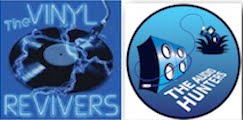

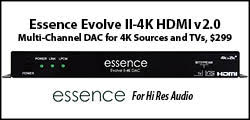

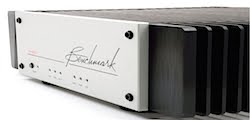


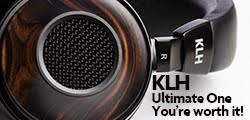
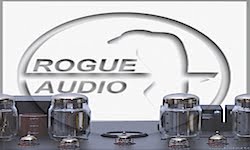

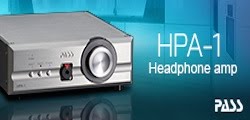


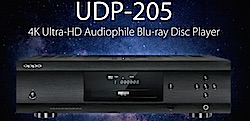


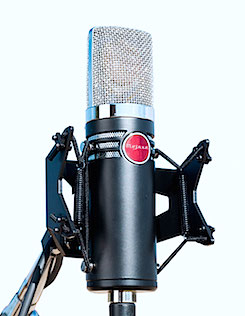
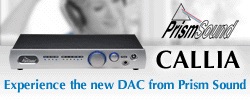
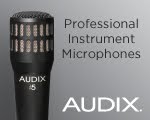
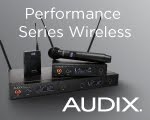
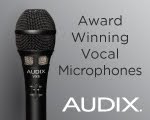
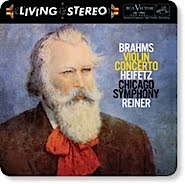






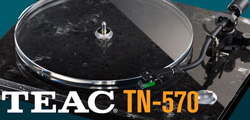





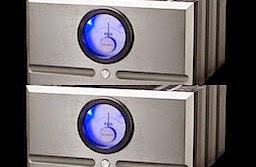
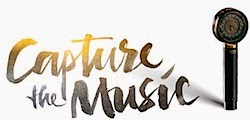


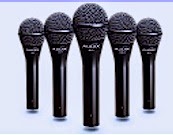


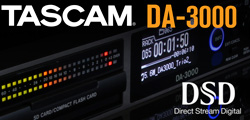

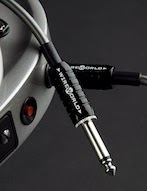

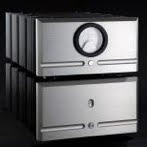









No comments:
Post a Comment